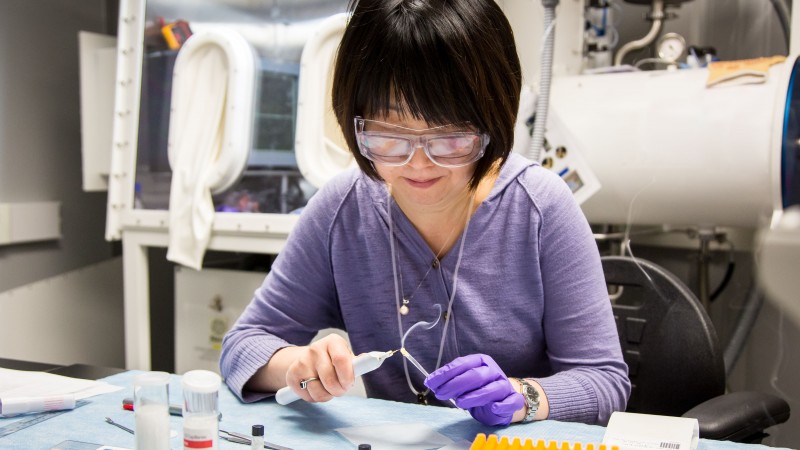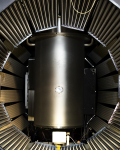Ying Shi, a Senior Research Scientist with Corning Incorporated, is using Oak Ridge National Laboratory's Spallation Neutron Source (SNS) to study various types of glass made at Corning.
Shi is using the NOMAD instrument, SNS beam line 1B, which she says is especially good for the characterization of amorphous materials, such as glass, by providing short and medium range atomic structure information. Shi aims to correlate the structural analysis of each type of glass with its specific properties.
“Corning’s major product is glass,” explains Shi. “We are always trying to improve the properties of the glass. But the properties are determined by the structure, and the glass structure analysis is very challenging due to the lack of periodicity as in crystalline materials.”
Improvements to glass properties have many real world applications. For example, Shi notes that stronger glass would lead to better durability for mobile devices, windshields, TV screens, and many other products.
Shi says Corning researchers have applied many techniques to make such improvements, but SNS’s unique NOMAD instrument provides opportunities to extract structure information that cannot be determined by other analytical techniques.
“I’m very excited about this trip,” says Shi. “I’ve been in this field for two years, but with NOMAD I’m already on my way to making some new findings.”
By using neutrons, there are two main advantages NOMAD provides over its sister technology – synchrotron X-ray scattering.
The first is the lack of fluorescence effects interfering with data. “If the glass contains some heavy elements, then using X-rays can result in a fluorescent spectrum that is hard to remove,” explains Shi. “I cannot get a good quality pair distribution function that way, but neutron scattering does not have this problem.”
The second advantage of using neutrons is that they interact with the nucleus of atoms rather than with the electrons. This benefit goes “to the fundamentals of physics itself,” says Shi. “You use neutron beams to interact with your particles, so the scattering beam does not vary with scattering angles like X-ray, and reliable nearest neighbor bond information can be obtained directly from a real space correlation function.”
But combining neutron and X-ray scattering techniques leads to even deeper understandings. The two techniques have long been coupled, the advantage being that the same structure information of atom-atom neighbors are probed by both techniques with different weighting factors.
“Some see neutron research as complementary, but I see neutrons as having some very fundamental advantages compared to X-rays. Still, you must utilize both together in order to obtain the most and best possible information.” Shi says.
SNS is a Department of Energy Office of Science User Facility. UT-Battelle manages ORNL for the DOE’s Office of Science. The Office of Science is the single largest supporter of basic research in the physical sciences in the United States, and is working to address some of the most pressing challenges of our time. For more information, please visit http://science.energy.gov/.





